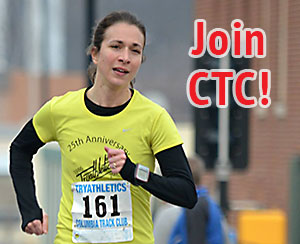Serial Competition among Running Clubs
The sport of running by mature men and women which we love so much, and which seems to bind us together toward some undefined common goal, could by now have become the main driving force behind the general well-being of the nation, both physical and moral, defeating obesity and destructive vice by supporting a healthy way of life. Indeed there exists a running club whose first object is “To proclaim and show by example that the common man or woman is a natural athlete for whom perfection is the norm”. Why then has this extreme optimism, and all those miles run by so many thousands, not brought our sport to a better position in the public mind?
The answer, as many of us must have thought from time to time, is that it lacks a suitable structure of competition that would make it a continuing entertainment for all. Much as we admire our stars it is also very much a means of achievement for people who are a bit too short in the leg ever to get into the top ten-per-cent, especially as they gain “veteran” status – whatever that is. There has to be a place in the game for everybody. A tall order? It can be done, and here is how. Football clubs play a series of matches. In each a few points are won and added to aggregates for the season that will decide which is champion. But meanwhile they can all be ranked every week, to the great interest of the absent spectator and the famous success of football pools. They have been doing it for more than a century, and we can do the same by assigning a score to each club member’s individual performance and adding it to an aggregate for the club.
All we need then is a way of defining that score as a true and acceptable measure of merit. After much thought, discussion and operational testing over years I have proposed that it be calculated as the proportion of the winner’s speed obtained by dividing the winner’s time by one’s own, multiplying by 100 and rounding. The winning woman’s time is the standard for a woman, so that sex is eliminated, and henceforth men and women have equal, not separate status.
Individuals are ranked by the aggregates of their best X scores, and athletic clubs or other teams by the aggregates of the best Y scores of their members, where X and Y are variable parameters (naturally functions of the number of races) that are agreed in advance, and determine the eliteness level of the competition. The choices are conjoined with a decision to divide the bigger clubs vertically into smaller teams so that they can compete without unfair statistical advantages. I now define a Serial Competition among Running Clubs as:
- A set of races having some significant affinity constituting a challenge.
Distances and types can be mixed. - Agreed choices of X and Y, the greatest numbers of scores to be aggregated per individual and per club
- Apply vertical division? Yes or no.
The code used for the computations is tiny compared with the needs of games, pictures and music, and is to be found in my humble program A1.EXE, a development of US.EXE, (that’s us, a magic mix of honest sweat with midnight oil) which integrates with Microsoft Excel.
A current challenge is a series of several races held under the auspices of the Columbia Track Club of Missouri USA. You can see the output after the latest cycle there at Individual Ranking and at Alphabetical List. To get yourself a Serial Rank, run as many of the series as you can. Your name will then appear on the Columbia Track Club’s site in namesa-z.htm.
Ronald Hindley, 269, Dysart Road, Grantham NG31 7LP. Great Britain 01476 402875
First published as a paper leaflet in 2004. Edited by the author in March 2007 for the use of the Columbia Track Club. Re-edited by Hugh Emerson after the death of the author.


